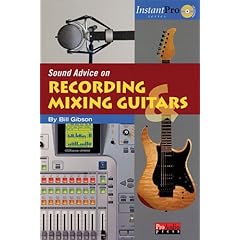Post anything relevant to the thread's title.
I got this yesterday:

"Product Description
Get complete guidance on both traditional orchestration and modern production techniques with this unique book. With effective explanations and clear illustrations, you will learn how to integrate the traditional approach to orchestration with the modern sequencing techniques and tools available. You will discover how to bridge the two approaches in order to enhance your final production."

"Product Description
Guitars of all varieties form the basis for many kinds of music, and a great guitar sound can often make or break a track. This budget-minded book will give you the knowledge you need to start making guitar recordings like a pro! This is a quick yet thorough guide to getting the best guitar recording. Covering all popular methods of mono and stereo guitar miking, veteran MixBooks author Bill Gibson will also guide you through every step of mixing and make sure your track sounds just right! The accompanying CD demonstrates all the concepts described in the text."
They look good to me. I'll be going through them this week.
I got this yesterday:

"Product Description
Get complete guidance on both traditional orchestration and modern production techniques with this unique book. With effective explanations and clear illustrations, you will learn how to integrate the traditional approach to orchestration with the modern sequencing techniques and tools available. You will discover how to bridge the two approaches in order to enhance your final production."

"Product Description
Guitars of all varieties form the basis for many kinds of music, and a great guitar sound can often make or break a track. This budget-minded book will give you the knowledge you need to start making guitar recordings like a pro! This is a quick yet thorough guide to getting the best guitar recording. Covering all popular methods of mono and stereo guitar miking, veteran MixBooks author Bill Gibson will also guide you through every step of mixing and make sure your track sounds just right! The accompanying CD demonstrates all the concepts described in the text."
They look good to me. I'll be going through them this week.

